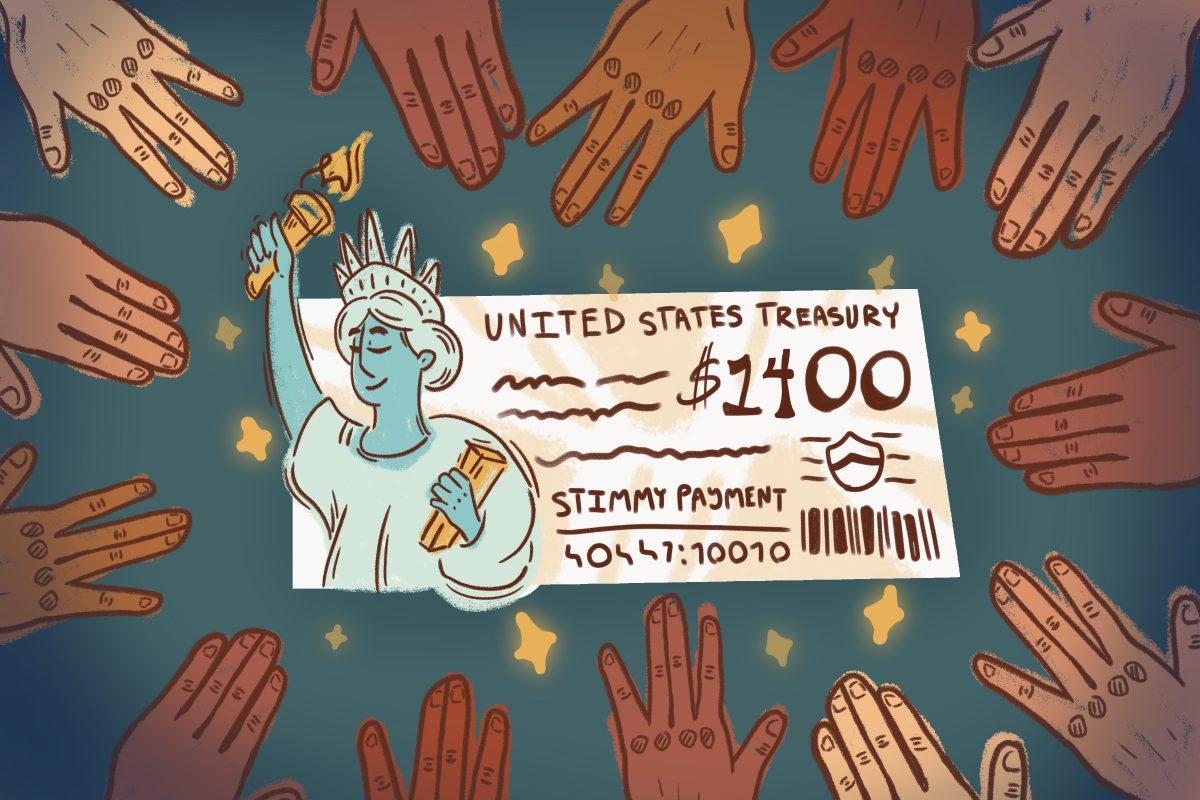The American Rescue Plan Act of 2021, which President Joe Biden signed into law March 11, 2021, included dependents over the age of 17 in one-time stimulus payments and allotted funds to institutions of higher education in order to expand emergency aid for college students.
Unlike the previous two COVID-19 relief bills, both of which largely excluded students 17 and older claimed as dependents on their parent or guardian’s taxes, the American Rescue Plan allocates payments for all dependents, provided the person they are filed under is eligible.
Single filers who made $75,000 or less and couples who made $150,000 or less in 2020 are eligible to receive $1,400 per filer as well as $1,400 per dependent. Individuals who made between $75,000 and $80,000 and couples who made between $150,000 and $160,000 are also eligible for payments, which decrease in amount as annual income increases.
The IRS will send these payments, including the amount allotted to adult dependents, directly to the filer, leaving individual families to decide how the money is used. In many instances, college-aged students’ qualification for the payment provides more direct relief for parents and guardians who are financially responsible for the student than the students themselves, who may feel less direct financial burden.
Other students have agreements with their families as to how the money will be used for their personal benefit. Filers with dependent students carrying significant personal financial responsibility, for instance, may choose to transfer the payment to the student.
Catherine Carter, a first-year studying political science, said her family plans to use a portion of the money to contribute to a family trip once it is safe to travel again.
There are no legal stipulations within the bill as to how that money is used once it is transferred to the filer. Bhavana Veeravalli, a first-year studying graphic design, said she was concerned about dependent students not benefitting from their share of the payment because of possible tension in their household.
“I hope for the sake of college-age dependents, it works in their favor rather than just giving the filers more money,” Veeravalli said.
Further benefits to college students are provided through the Higher Education Emergency Relief Fund (HEERF III) embedded within the American Rescue Plan. According to Charles Maimone, the vice chancellor for finance and administration, HEERF III will provide an estimated $49.5 million for NC State.
“These funds are meant to assist students with the educational costs and impact associated with coronavirus,” Maimone said. “That includes cost of living and technology requirements and other things to help support the move to distance education.”
Of that money, $25 million will be distributed directly to students through emergency grants. The Office of Scholarships and Financial Aid will make these grants available once NC State has received the funds. In the meantime, students can still apply for CURE2 emergency grants in the MyPack Portal by navigating to Financial Aid for the 2020-2021 academic year and clicking on the “CURE2 Emergency Grant” tab in the sidebar.
The remaining $24.5 million will be used to offset institutional costs connected to COVID-19. According to Maimone, these costs moving forward will lie primarily in surveillance testing, vaccination efforts and increased sanitation to prepare for in-person operations in the fall.
“In-person classes [will] change the density of the campus every day, so you can see that the magnitude of all of our current efforts will increase,” Maimone said. “Surveillance testing is likely to continue to be an important part of what we do over the summer and fall, and vaccination will likely continue into the fall as well.”
Since these funds are much larger than payments made to the school as part of previous coronavirus relief packages, Maimone said the extended time frame will necessitate extended distribution time, meaning not all of the money will be available at once.
“One of the distinctions that should be made [is that] HEERF III applies to expenses all the way to December 2022,” Maimone said. “So that means that the money [will be] part of our strategy for seven different terms over which we will apply the response.”
Additional potential benefits for college students include the Student Loan Tax Relief Act and the Child Tax Credit.
The Student Loan Tax Relief Act states any student debt that is forgiven between December 2020 and January 2026 will be tax-free on the federal level. This could imply increased efforts towards student debt cancellation in the coming years.
The Child Tax Credit will provide $3,000 to filers for each dependent child ages six to 17 and $3,600 for each dependent child under six years old. This money will be distributed in monthly payments of $250 or $300 beginning in July 2021.
The American Rescue Plan increases benefits for college-aged students, but students remain responsible to a certain extent for taking advantage of those benefits, Maimone said. He encourages students to apply for CURE2 emergency grants while the application remains open and to pay attention to communication from the Office of Scholarships and Financial Aid concerning new emergency grants in the coming months.








